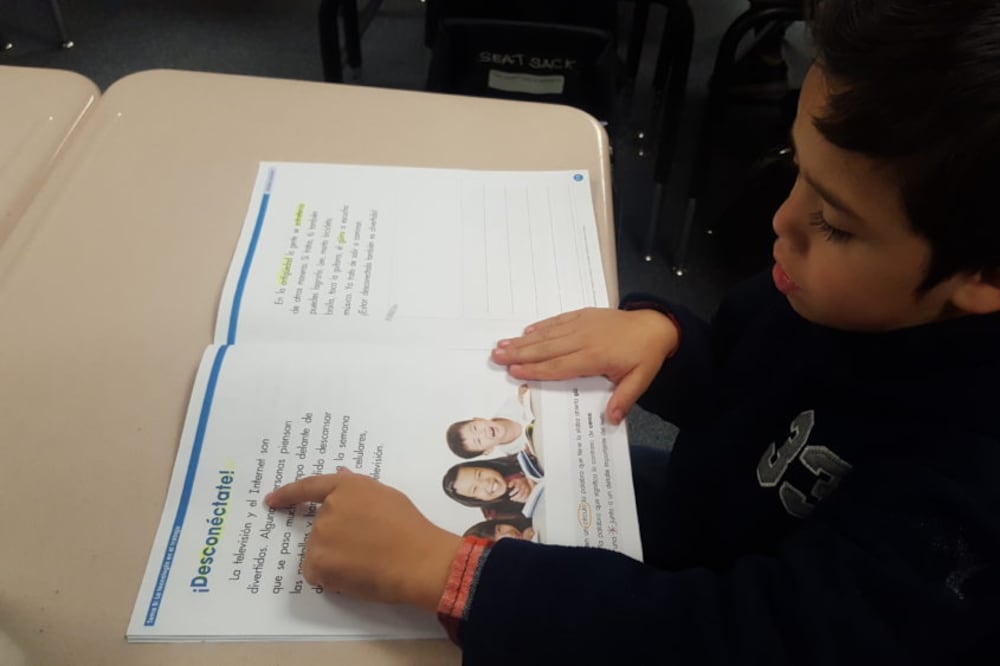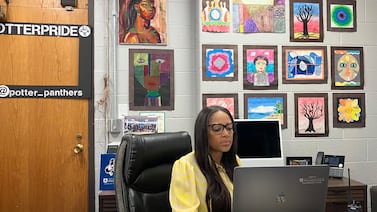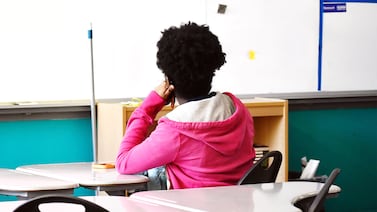It’s taken 10 years, but the Adams 14 school district has finalized a plan that has conditional federal approval to improve education for its English-language learners.
Adams 14, a school district north of Denver where about half of the 6,500 students are English learners mostly from Spanish-speaking homes, had written a plan before — in response to that federal request.
But for the first time, the district has received approval for the plan from the federal Office for Civil Rights. The approval was conditional on some recommended changes that the district has just completed.
“This is a huge step for the district,” said Tonia Lopez, Adams 14’s director of culturally and linguistically diverse education and instruction, “one that will provide opportunities for our kids to be able to thrive.”
Besides never winning federal approval, other plans were never completely rolled out as intended, because of a constant churn in district leadership and at times resistance to some ideas.
The federal office did not respond to requests for comment, nor answer questions about why it did not approve previous plans.
The latest plan builds on ideas from previous plans including graduating students with a seal of biliteracy that demonstrates they are fluent in English and a second language.
The plan also intends to roll out current bilingual programming which exists at four of the district’s seven elementary schools, to include fifth graders next year. The district will also introduce a Spanish language arts class for middle school students, and most notably, the district is looking at creating a dual language program.
The plan is to create a two-way dual language program. Under that model, the district would need to enroll an equal number of students who have English as a native language and Spanish as a native language into the program. The classes are offered in a mix of English and Spanish, and the idea is that the children help each other become bilingual.
The district first will have to assess potential enrollment. For years, community members have asked for a similar model where English-speaking children could also have the opportunity to become bilingual. The district must also assess whether it can hire enough qualified, bilingual teachers. This has been a challenge previously.
Lopez and district officials, however, said that the work aligns with what they’ve heard that the community wants.
District leaders also emphasized that the work is not only about creating new programming, but also about integrating practices that help English learners in all classes across the district.
Adams 14 is in its second year of a four-year plan to improve student achievement. The state ordered the district to hire private management to help make those improvements. The outside firm, MGT Consulting, hired staff with experience in bilingual education to help the district finalize this language plan.
With one of the highest proportions of English learners in any district in Colorado, having a plan for educating English learners is crucial to improving its performance overall. Some research shows that English learners who become fluent in English can outperform native-English speakers. But while students are in the process of becoming bilingual, it is difficult for them to earn high scores on standardized tests normally given in English.
The district is also still working on meeting other federal requirements. Another agreement signed with the Office for Civil Rights addressed improvements the district must make to correct discriminatory practices.
Jorge Garcia of the Colorado Association for Bilingual Education, who has been critical of the district’s education of language learners in the past, said he is glad the district has an approved plan, but hopes that it doesn’t disappear with the next leadership change. While MGT will continue to oversee the district for a few more years, plans call for starting a superintendent search later this school year.
“Every time there’s a new administration, there’s a new plan,” Garcia said. “You can always improve and so I’m definitely not saying that once you have a plan that you should never change it, but I just hope that this particular plan will be consistent — that the district will really try to implement the plan.”
Superintendent Don Rangel echoed the intent to do so, at a meeting with the school board Tuesday.
“It is a journey,” Rangel said. “If we put it in our plan and it’s going to help our students succeed in the way we know it should, then we need to implement it fully and aggressively.”
The school board Tuesday mostly praised the work, acknowledging that it is important programming for district families.
Board members also asked about goals for the programming, whether the district engaged with outside experts and advocates, and how long it would take to implement.
The language plan outlines goals but they lack specifics and deadlines.
One goal, for instance, is for the district to help all students reach English proficiency within six years. The plan calls for the district to identify students who have already taken longer than that, to create individualized plans to help get them back on track.
Garcia also said he has talked with the district about other concerns he still has with the plan around ensuring that students who are not yet fluent in English can be tested in their native language when possible, and around how and when families are involved in the placement process for their children.
“To me it could be and should be so much more participatory,” Garcia said. “Parents are told rather than being asked for input.”
Lopez said the district will keep looking for ways to improve relationships with parents and the community, and said the district has other plans that go into more detail about what language students can be tested in, following state rules.
The plan, which is meant to be a long-term vision for the district’s education of English learners, does not include changes required during the current remote learning period.
Lopez said that while things may look different, including the initial assessment of students’ language proficiency, the services and goals remain the same.
Read the final draft of the full plan, below:







